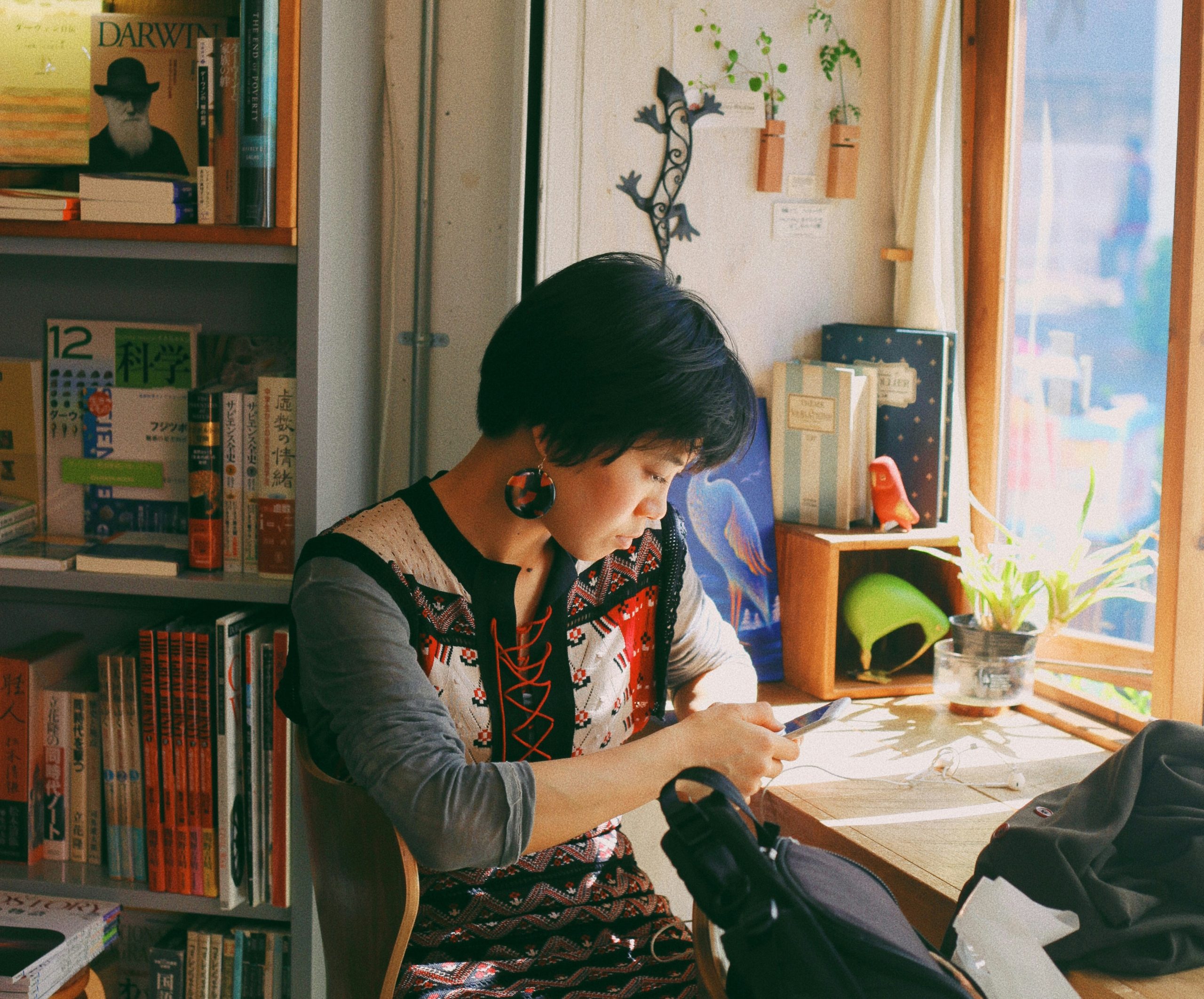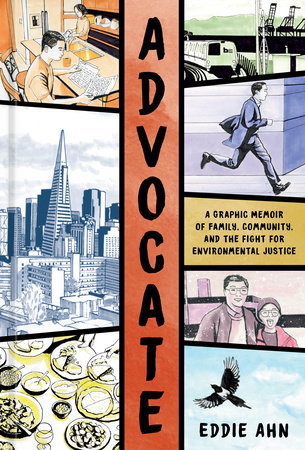Graphic storytelling is a medium that can capture the intricacies of identity and belonging in a way that prose can’t through the use of color, shading, and linework to denote different moods, time periods, and perspectives.
My book, Advocate, utilizes these techniques to represent the different parts of my identity: the son of Korean immigrants, but also as an artist, an environmental justice lawyer, and a nonprofit worker working with diverse communities. Through Advocate, I wanted to create a persuasive narrative not just for readers, but for my own family, who had always struggled to understand my nonprofit career. Comics allowed me to juxtapose the conflicts within my family and my own ongoing work. Looking back on the wide range of artistic styles in my favorite graphic memoirs also inspired me to explore different visual storytelling techniques. As a self-taught artist working directly on paper, I selected and purchased each color of my Copic markers very carefully, thinking through how color shades denoted the time and mood for different periods of my life (shades of red to symbolize my youth and early passions, purple to symbolize a period of transition and learning). In later pages, these colors mix and meld on the page as I reflect on my past or use flashbacks as a narrative technique. After exploring so many different colors and eras, I’m happy to have settled in a calmer state of mind today, which is reflected in the shades of blue in my final chapter.
My book follows in a rich history of Asian American illustrators and authors, each telling and drawing stories of their family history in their own distinct style. Below are 7 graphic memoirs by Asian American authors that explore coming of age, familial legacy, and inheritance.
Dragon Hoops by Gene Luen Yang
Acclaimed graphic novelist Yang was a teacher at Bishop O’Dowd High School in Oakland and his latest book dramatizes the basketball team’s journey to the California state championship. With expressive linework by Yang and understated color work by Lark Pien, the book shines a spotlight on the players and coaches, their dreams, struggles, and hopes, while weaving in anecdotes about the history of basketball. A compelling read.
Messy Roots by Laura Gao
Laura Gao started posting her comics about Wuhan, her home city in China, on Twitter during the pandemic where it became viral. Messy Roots is a love letter to her Wuhanese roots and an exploration of cultural and gender identity, queerness, and combating racism while challenging anti-Asian racism that was at its peak during the early days of the pandemic. The memoir follows her childhood in China to her family’s immigration to Texas, college life, and her eventual move as an adult to California. A thoughtful and illuminating meditation on coming into yourself.
Continental Drifter by Kathy MacLeod
With precisely considered panel layout and illustrations, this graphic memoir recounts the tumultuousness of adolescence over the course of a single year. With a Thai mother and American father, MacLeod grew up between Bangkok and Maine, while never quite entirely fitting in either country. Amid scenes of pastoral beauty in New England, MacLeod is constantly reminded of her biracial identity by the callousness (and occasional kindness) of others at her summer camp. A touching story of finding belonging and self-acceptance.
Family Style: Memories of an American from Vietnam by Thien Pham
Pham’s graphic memoir is told through food and begins with a traumatic pirate attack as their family escapes Vietnam and progresses to Pham’s early memories of being in a refugee camp in Thailand, and then finally settling in San Jose. Every chapter in the book is named after a dish that represents a pivotal moment in Pham’s journey: “Rice and Fish” is the meal of his childhood on the boat and the refugee camp while “Steak and Potatoes” encapsulates his time in America, while “Strawberries” follows his family’s as laborers on a berry farm. In the final chapter, Pham pursues citizenship, a culmination of his family’s struggles and sacrifice to make it to America for a better life.
Feeding Ghosts by Tessa Hulls
A story about the reverberations of trauma, Feeding Ghosts pierces family mythology with an in-depth look at three generations of women. Tessa Hulls’ Chinese grandmother Sun Yi, a journalist, escaped from Shanghai to British-ruled Hong Kong with her mixed-race daughter, Rose, after facing persecution from the community party. Hulls’ mother is the product of an affair with a Swiss diplomat, her existence unacknowledged and recognized despite Sun Yi’s desperate entreaties to the Swiss embassy to recognize her paternity and afford her daughter the privileges of legitimacy. In Hong Kong, Sun Yi pens a bestselling memoir that brings her acclaim, respect, and financial security, but the years of struggle manifests in a breakdown. Rose spends her weekdays in an elite British boarding school and the weekends visiting her mother in a psychiatrist ward, before she eventually moves to California for college. Rose’s life-long responsibility as a caregiver leaves her riddled with anxiety, a mercurial figure to Hulls who spends most of her life estranged with her mother. Tessa Hulls conveys the nonlinear process of healing through the book’s black inks and panels that bleed across the page, allowing for stark and sprawling graphic storytelling that is a tender and vulnerable exploration of matrilineal legacy.
Almost American Girl by Robin Ha
Seoul-born Robin Ha’s memoir follows a major turning point in her life: an unexpected move to the United States as a teenager after her mother decides to get married to a man in Huntsville, Alabama. The book charts Ha’s grapple with culture shock, her relationship with her mother, racially motivated bullying in school, and her adjustment to life with an American stepfamily. A contrast to Ha’s narrative is the inclusion of her mother’s perspective on immigration and their struggles. Soft and subdued coloring is used for the majority of the work, with recollections of Korea in sepia tones.
The Best We Could Do by Thi Bui
Spanning the present day and the past, Bui’s memoir traces her family’s escape after the fall of South Việt Nam in the 1970s, their stint in a refugee camp in Malaysia, and their lives in California. A chronicle of family history and the fall of a country, Bui shows how recollections of shared historical events differ amongst family members, and each memory malleable and shaped by the person’s identity and life experiences. A thoughtful mediation on war, displacement, and parental sacrifice.
Read the original article here

